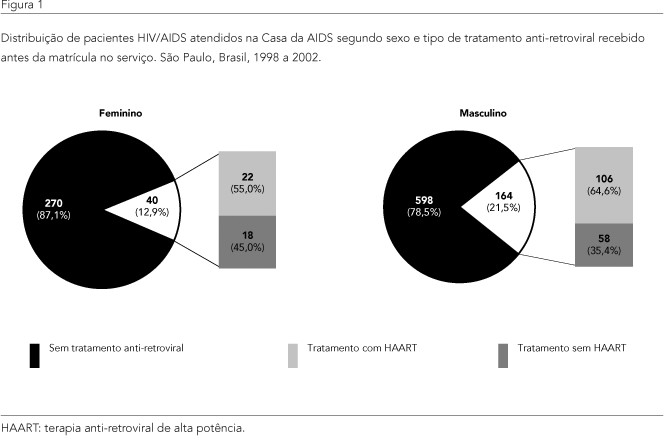The number of women living with HIV has increased in Brazil, demanding special attention to women's needs. To evaluate gender differences at an HIV reference center in São Paulo, 1,072 patient medical records from 1998 and 2002 were reviewed. As compared to male counterparts, women tended to be younger and have less schooling, and higher proportions of women were married and heterosexual. Thirty-six percent of women had undergone HIV testing because of an HIV+ partner. In contrast, 43% of men had undergone testing because of AIDS symptoms. At admission, 55% of men and 38% of women had an AIDS diagnosis. Women presented higher CD4+ cell counts and a higher proportion of undetectable HIV viral loads. No difference in access to antiretroviral therapy was seen after stratification for clinical status. Although the observed gender differences in socio-demographic characteristics emphasize women's social vulnerability to HIV, as compared to men, women in this cohort sought specialized care at earlier stages of infection. Knowledge about particular gender characteristics at admission to a reference center may contribute to organizing services delivery, improving care, and maximizing benefits.
HIV; Acquired Immunodeficiency Syndrome; Health Services Accessibility; Gender Identity





